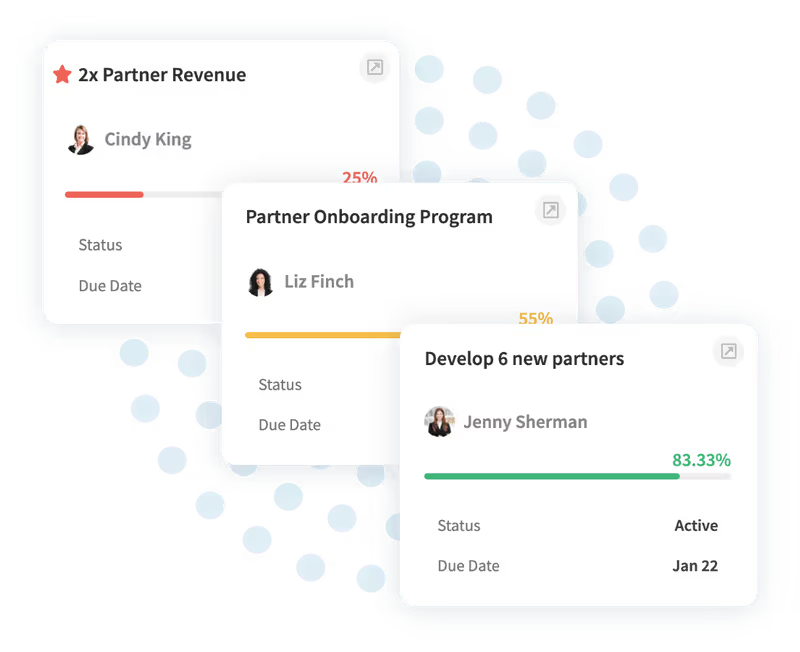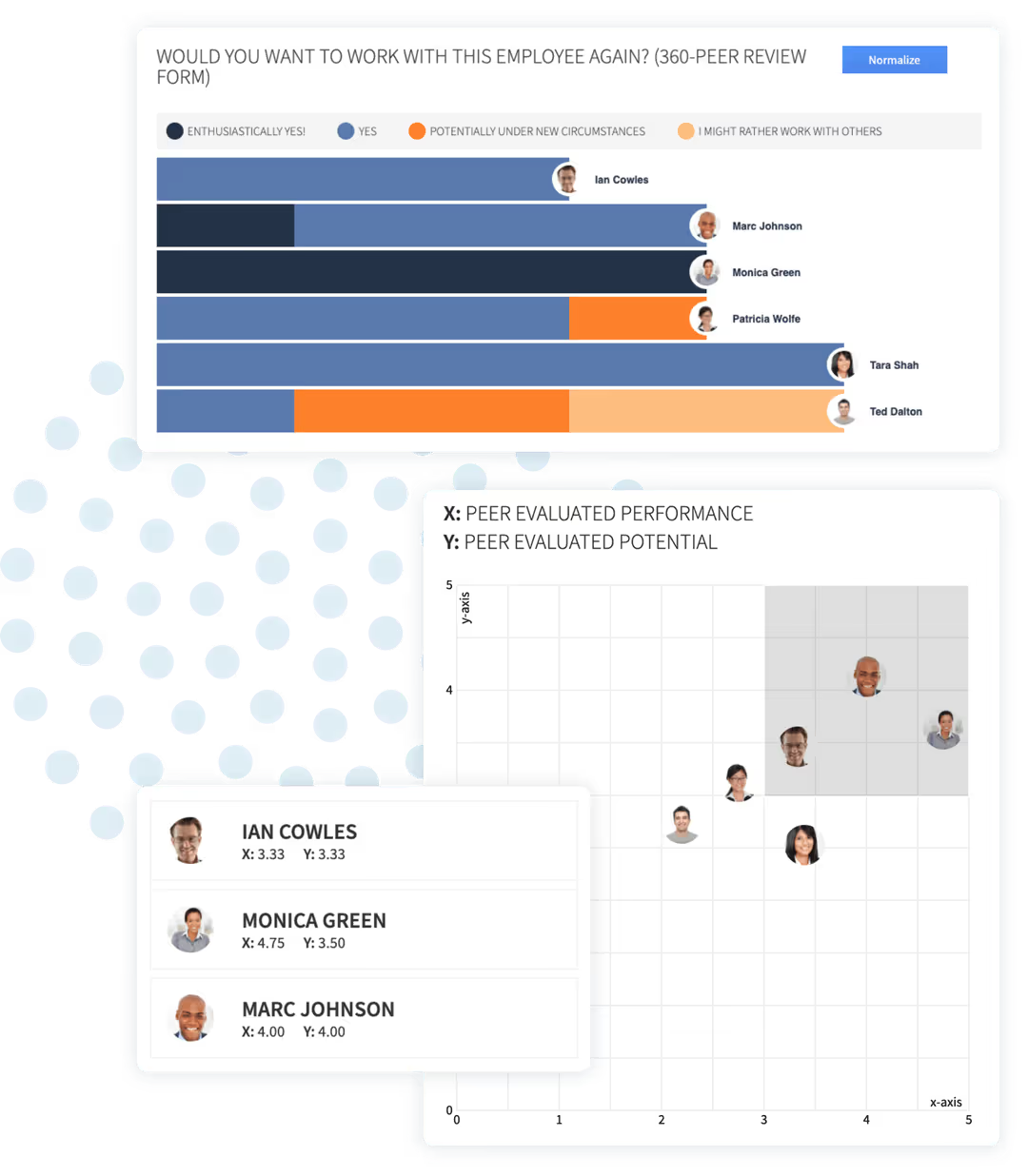Building a Business Case for Performance Management
It’s hard to make a business case for performance management when the CEO only thinks about old-school review processes. Some traditional performance review processes are so bad that they make performance worse one-third of the time.
CEOs and CFOs think about how ineffective reviews can be. It’s understandable that they would hesitate to start a new performance management process.
Modern performance management makes a difference. The right strategy with the right software can boost employee performance, but you’ll have to make a business case for it. CEOs and other leaders may not understand how important and impactful the right performance strategy can be.
This article can be your guide to making a business case for performance management. Use the facts and case studies below to build a convincing business case for performance management.
First, let’s talk about what good performance management looks like in a business.
What Does Performance Management Look Like in a Business?
Bad performance management techniques are like a one-sided interview. The employee feels like they are being judged. These reviews are so bad that 22 percent of Millenials have admitted to calling in sick rather than face a review. Another 59% say that their manager wasn’t prepared to give meaningful feedback.
A performance review should feel collaborative. Feedback should be clear, the next steps should be laid out, and employees should have plenty of time to offer feedback of their own.
But, how does that work?
There are many types of performance appraisals you can try:
- Check-ins create a more consistent time and space for discussions about long-term performance
- 360 Feedback incorporates input from coworkers, as well as managers
- Project-based reviews focus on employee contributions to specific projects
The key is selling your management team on the fact that your performance management process needs an overhaul.
Here’s everything you need to know about building a business case for performance management.
Building a Business Case for Performance Management
Building a business case for performance management is all about presenting accessible statistics. These facts will show how the right strategies and software can impact your organization in positive ways.
A few benefits of overhauling your performance management strategy include:
- Reduced administrative cost
- Reduced turnover
- Reduced liability
- Improved organizational alignment
- Reduced succession gaps
- Improved workforce optimization
Reduced administrative cost
Poor management leads to lost productivity. It has been estimated that U.S. employees who aren’t engaged cost businesses and organizations a whopping $960 billion to $1.2 trillion per year.
A good performance management strategy saves money. This is true even if you pay for performance management software.
The right performance management software can reduce administrative costs. It does this by automating review distribution, collection, and recording. The software saves time, which saves money. Strong performance management systems motivate your employees to perform their best.

Reduced turnover
Employee turnover is a serious problem. When an employee leaves their position, it costs over 20% of their annual salary on average to replace them.
It pays to get to the bottom of employee discontent. An effective performance management strategy reveals problems before they arise. It also encourages employees to stay.
In 2012, Adobe had a revolutionary idea that led to a revolutionary approach to performance management. This approach influenced big-name companies from Microsoft to GE along the way. The companies chose not to continue slogging along with traditional performance appraisals.
Instead, they implemented regular performance check-ins. These check-ins provide employees with ongoing, real-time feedback. There are no forms to fill out and no deadlines. The companies can now respond to organizational or market adjustments more quickly.
This Adobe performance management case study shows how Adobe achieved a 30% decrease in employee turnover.
Crunch the numbers for your particular organization. You’ll be amazed at how much you will save when you choose a performance management strategy that works for your business.
Reduced liability
Decentralized performance reviews can lead to false statements appearing in employee reviews. That can spell real trouble for your organization. Managers may report false or confidential information to third parties without employee consent.
These mistakes can lead to costly litigation. The mistakes also reflect a lack of respect that can lead to decreased productivity among employees.
A formal approach to performance reviews fixes this. It features measurable objectives, self-assessments, and reliable data storage. These features reduce the chances of your organization experiencing a lawsuit.
Improved organizational alignment
Do your employees understand what their performance reviews are trying to achieve? Chances are, they don’t. A measly 14% of employees understand the organization’s strategy.
This disconnect happens when organizations fail to use cascading goals.
Cascading goals strategy requires that you first identify organizational goals. Next, break them down so each member of the team can contribute to the same common goal. With cascading goals, everyone in the organization knows what to do, how to do it, and why they’re doing it.
Everyone’s actions align with the goals of the organization.
Software for cascading goals does cost time and money. Employees who spend time on misaligned activities cost time and money too. You’ll save in the long run if you ensure the actions of every employee align with your organization’s big goals.

Reduced succession gaps
Do your top performers know who they are? Do they know that you have plans to promote them in the future?
Without a clear system for performance reviews, you aren’t communicating your appreciation. That comes with expensive consequences. Nearly 80% of employees who quit their jobs say that a lack of appreciation is one of the major reasons they left.
Top performers who don’t stick around can leave a huge hole in your business. For example, executives can cost over 200% of their annual salary to replace.
Telling your top performers that you have plans to advance their career path helps prepare them for leadership positions. Employees are more likely to stay in organizations when they see a clear path to leadership positions. This will reduce the costs associated with searching for and interviewing new candidates.
Improved workforce optimization
Some business leaders and managers fall into the trap of thinking that performance management is a waste of time. They think that time would be better spent on letting employees do their jobs. In fact, the right performance management strategies optimize the time your employees spend on work.
The key is choosing performance reviews that improve workforce optimization.
They are reinventing performance management at Deloitte. Their case study demonstrates that performance management doesn’t have to be a lengthy, complicated process. Instead, they ask four questions — questions managers can answer. Deloitte now spends less time than ever on reviews. The company does conduct more often though and has more accurate data as a result.
What Are the Stages of Performance Management?
Once you’ve built your case for performance management, it’s time to show the leadership team exactly how a new strategy is implemented.
Check out the three-step process below. It will help you choose performance management tools that get leaders excited about changes..
Choosing a performance management process
Nine out of ten managers are dissatisfied with how their companies conduct annual performance reviews. When deciding on a new performance appraisal strategy, ask for manager input. Discuss the five modern alternatives to annual performance reviews. Determine which one your team thinks will best support individual, team, and organizational goals.
No matter what process you choose, make a plan to check in on how it’s serving your business. If the performance management plan isn’t supporting your employees, try something different.
Implementing a performance management software
No performance management process is complete without the right software. The software allows you to manage goals and check-in with employees according to the process you have chosen. Performance management platforms also create reports. These reports allow you to compare employee performance over time. The reports also provide data to track the effectiveness of the performance reviews themselves.

PerformYard is a favorite among leadership teams, managers, and employees. Its flexible, streamlined system makes it easy for everyone to use the performance review process. The platform can be slimmed down for simple annual reviews or built up for more complex strategies.
PerformYard’s visual reporting makes it easy for every member of the team to see how the results of each review impact your organization.
Getting buy-in from managers and employees
There are two ways to get manager buy-in when choosing a new performance management process. You can start by gathering manager input when selecting a new process. Next, be sure to show them the process with a demo.
The best way to get managers and employees on board with the new process is to let them experience it for themselves.
Managers will be glad to give up the old way of doing reviews once they see the benefits of modern performance management. These benefits include clearer expectations, more aligned goals, and an open dialog about progress.
You should also reward employees after the reviews are complete. Clear data will help you identify top performers and reward them for their efforts. The reward will make them look forward to performance reviews instead of dreading them.
A revamped performance management process may be what your organization needs. Show your leadership team the statistics and case studies from this article. It will help you build an irresistible business case for performance management.

